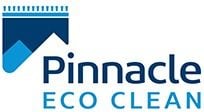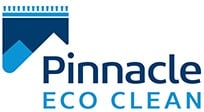What Are Upholstery Cleaning Codes?
Most new pieces of furniture that you purchase will have a label affixed to the platform (under the cushions) of the sofa or chair. The label will usually have the title “Recommended Cleaning Instructions,” and on the bottom of that label you will find a letter or letters. This designation is what is known as a cleaning code, and your label may have a code that says “W”, “SW”, or something else. (See the small letter “S” at the bottom of the label pictured in this post?) When we purchase furniture, we many times are interested in the color, pattern, or texture of the fabric, and aren’t really thinking about cleaning it! But a couple of years later, the issue of cleaning will come up, and that’s where the cleaning codes may help point you in the right direction.
Why are there cleaning codes? Well, one main reason is to help the consumer use a correct cleaning product for spot cleaning. The wrong product could cause the fabric to shrink or pucker; it could also cause the color to “run” or “bleed” into an adjacent color. Additionally, in the State of California, water-based cleaning products could remove or reduce water-based flame retardants. The product you use to clean a spot could also leave a dark ring upon drying. Therefore, you can see that there are a lot of concerns to take into account when attempting to clean a piece of furniture!
So, let’s take a moment to list many of the basic Cleaning Codes:
W – Generally, if you see a W at the bottom of your label, you should feel like you just won a prize! The W stands for wet or water clean. This means that, for the most part, you furniture can be safely cleaned using a water based upholstery cleaner or water based foam. A W coded piece of furniture will usually perform better in a variety of environments, and have a good chance of responding well to cleaning attempts. NOTE: a W code DOES NOT mean that you can soak your furniture with a garden hose! You still have to clean smartly and safely. Remember, the fabric you’re cleaning is very thin, and it doesn’t take a lot of product to clean it. All things being equal, a water based cleaning product will clean better than most anything else, but you still have to be careful. When spot cleaning, use a small amount of product on the spot, perhaps by applying the spotter to a terry cloth towel first, and then applying the cleaner to the spot. Feathering out the spotter to a slightly larger area will help reduce the chance of leaving a water ring or halo when dry. Blotting the spot with a dry terry cloth towel will help the spot dry faster, reducing the possibility of bleeding. If you are cleaning the entire piece of furniture, make sure to clean right up to and including the edges to reduce the possibility of leaving a large water mark. Spot drying with a hair dryer on a cool setting will help you see your results faster. BEFORE CLEANING, you should always pre-test your cleaning product on a swatch or perhaps a hidden area by the zipper on a cushion, and see how the fabric will respond to cleaning. Wait until it’s completely dry to know for sure!
S– An S code stands for solvent clean, or dry clean only. You may possibly see a P, D, or DC code, which usually means the same thing. Frequent maintenance is the key to keeping this fabric looking good. Generally speaking, the manufacturer is probably concerned about bleeding, puckering, shrinking, and leaving a brownish water mark. In addition, in the State of California, solvent cleaning won’t damage a water-based flame retardant. You may be able to safely clean a spot by using a spotter that you would use on your dry-clean-only clothing. As stated previously, pre-test carefully! In addition, a Dry clean only piece of furniture might still be able to be cleaned safely with water-based cleaning agents by a qualified professional.
SW or WS– these codes denote that your piece of upholstered furniture can be cleaned by either dry solvent or wet methods. If you decide to tackle this yourself, do so very carefully, and pre-test accordingly. Generally speaking, a qualified professional would be your best option.
F stands for foam clean. Instead of using a lot of water, it may be possible to safely clean the piece with just the dry foam from a specialized cleaning solution. Again, be careful to not over-wet such a piece.
E and N usually reserved to cleaning of leather.
X or X/S means the piece can’t be safely wet OR dry cleaned! You can only safely clean the piece by brushing with a soft brush and careful vacuuming. In other words, in layman’s terms, this piece of furniture can’t be cleaned using normal cleaning procedures. Even a trained professional will be taking a big chance, IF he agrees to clean the piece. Isn’t that great? That’s why it’s good to know what you are buying BEFORE you buy it! You might save yourself a headache and money in the future.
For good reason, we can’t over-emphasize our feeling that a “W” or “WS” cleaning code is what most consumers should look at when purchasing furniture.
With proper care including frequent vacuuming with a soft brush, your furniture should last you several years! If you live in the Rochester, NY area, we would be happy to provide you with a quote for cleaning your upholstery.




